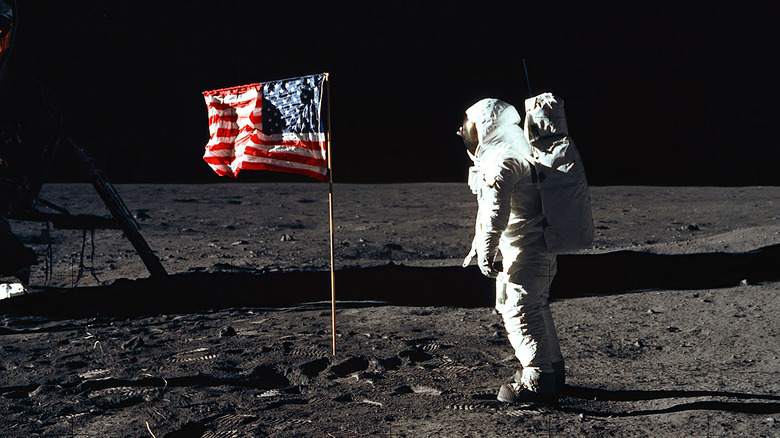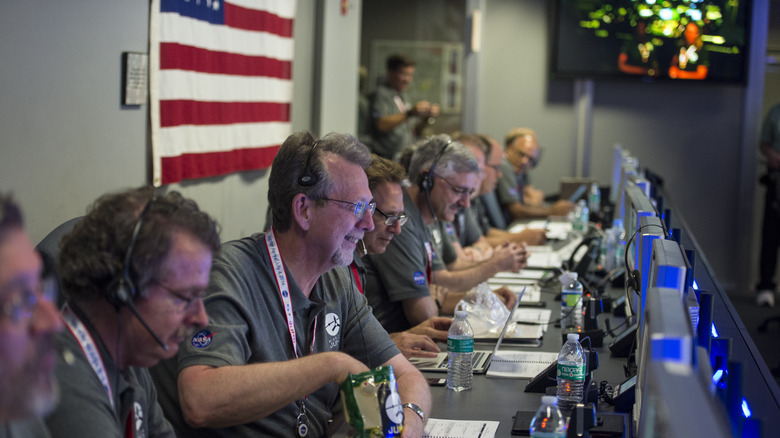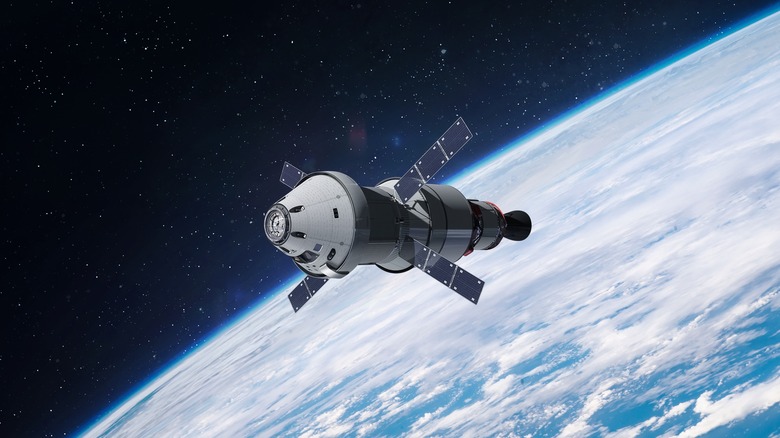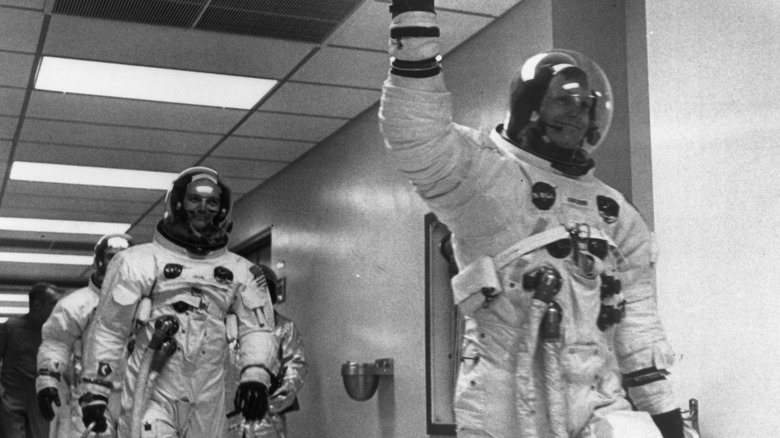The 10-Year-Old Boy That Got Apollo 11 Back To Earth Safely
The first U.S. space flight that landed humans on the moon has been memorialized in history through nearly every school textbook. Per NASA, 650 million people tuned in to watch astronauts Michael Collins, Neil Armstrong, and Buzz Aldrin dock their spaceship as Armstrong said his famous line, "...one small step for a man, one giant leap for mankind."
Despite their success, the moon mission was risky and there were actually quite a few nail-biting moments throughout the journey. According to Space, the spaceship flashed an error code "1202" — meaning the computer dashboard was overloaded and would soon reboot — just minutes before the vehicle was supposed to touch down on the moon. They also arrived low on fuel and off-center from their intended landing spot, meaning there were a tense few minutes where Armstrong had to search for another smooth surface to land on, per Space. Once they landed, the team even had trouble with the door hinge, making it unclear for a moment if they would be able to exit the aircraft. But the problems weren't reserved for the astronauts in space; Mission Control was also having trouble communicating with the team. Luckily, a 10-year-old boy was ready to help out the astronauts from 240,000 miles away.
Who is Greg Force?
According to NPR, Greg Force was a 10-year-old boy whose father, Charles, worked at NASA. Located at the NASA science center in Guam, Charles Force was in charge of maintaining the audio communication between the astronauts and Mission Control using a dish antenna, per Cracked. But on July 23, 1969, just one day before the Apollo 11 astronauts would splash down successfully in the Pacific Ocean, the massive antenna on Earth that was enabling communication with the astronauts broke (via Cracked). For a moment, the astronauts risked flying rogue.
It's unclear how it happened, but a bearing inside the dish antenna had broken and needed to be lubed up, per NPR. The problem was, the dish was held in a container with only a very small opening, and none of the adult workers in the station could squeeze their arms through. So Charles Force called home to see if his son's thinner limbs could be of service to the first U.S. astronauts hurtling toward the Earth with no way to communicate with Mission Control (via NPR).
Greg's success
Greg Force had spent lots of time at the station growing up, listening to the radio communications between the astronauts while they undertook their journey. When his dad called, it was "close to his bedtime," he recalls in a StoryCorps interview. Nonetheless, Greg rushed to the station and scaled the ladder to access the antenna. Stretching his hand inside as far as he could, he smashed in as much grease as he could to help the bearing function again.
In the StoryCorps interview, in which 60-year-old Greg talks with his 17-year-old daughter, Greg recalls the experience: "I would take a big handful of grease — you know, you squish it," he said. "It comes out between your fingers, and I stuck them down in there and packed them the best I could. Me being able to climb up there and help was kind of like I was part of the crew there."
Greg's recognition
The next day, once the team had successfully touched down on Earth, Greg Force's contributions to the mission were recognized in the local news and a NASA press briefing included his story in its report. According to the briefing, Greg eventually met Neil Armstrong, who thanked him for saving his mission in person. "Now that I look back on it, I'm very proud," Greg said in the StoryCorps interview. "Not especially anything amazing that I did, but that I happened to be in the right place at the right time. I'm also proud that my dad trusted me enough ... to do it."
Later on, Greg's story inspired a children's book called "Marty's Mission," according to Cracked. Charles, his father, died in 2007 after nearly 30 years of working at NASA, where he helped develop a new communications network that "cut NASA's telecommunications costs in half and is still in use today," according to his NASA obituary. Greg wanted to be an astronaut like his heroes and work for NASA like his dad, but he was colorblind and unable to do so, per NPR. Instead, he owns a gymnastics studio, putting the flexible limbs that helped squeeze in the grease as a kid to use.



